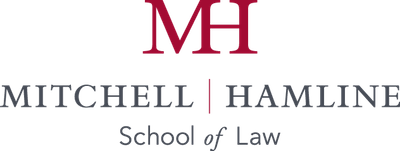This electronic version of Minnesota Administrative Procedure (Third Edition) is an update and revision of two prior print editions. The original work was published by Butterworth Legal Publishers in 1987 and updated in 1990. The following individuals made generous contributions in preparing chapters for that edition with no expectation of compensation and that expectation later proved to be accurate: Michael J. Ahern, Larry A. Bakken, Thomas J. Barrett, John A. Breviu, the late Bruce D. Campbell, Martha J, Casserly, Steven C. Cross, Barry R. Greller, Maryanne Hruby, Susan A. Kiefer, Allan W. Klein, the late Jon L. Lunde, Daniel J. McInerney, Jr., Thomas R. Muck, Robert R. Nardi, Elizabeth M. Parker, Lee E. Sheehy, Stephen D. Swanson, John E. Simonett, Douglas L. Skor, Andrew J. Tourville, Jr., Thomas J. Triplett, and Bruce D. Willis. Others who contributed were Don Gemberling, Anne Grande, Paul Marinac, Ken Raschke, Mark Sheppard and Julie Beck.
The second edition of MAP was published in 1998 in a loose leaf format due to the diligent efforts of Assistant Editors Mary Beth Gossman and Laura Nehl-Trueman. It was updated with supplements in 2003 and 2008 because of the hard work and persistence of Anne C. Becker and Maria E. Lindstrom Pretzer.
This third online electronic edition, which is available to everyone without cost, is only possible due to the support of the Mitchell Hamline School of Law and particularly Professor Mehmet Konar-Steenberg and Sean Felhofer, the Digital Initiatives Librarian at Mitchell Hamline. They have contributed countless hours in order to provide this resource for those who work in and encounter state government. We believe that use will find this edition more useful in that it is not only updated, but also easily navigated, word searchable, and capable of having excerpts printed out.
This edition would not exist without the efforts of the “chapter editors” who undertook to update a chapter for the third edition. Due to the length of time since the last supplement, and significant legislative changes, this required a significant contribution of time and effort. Their names are highlighted below. Thank you so much for making this resource available again. This edition will be updated as necessary and we welcome corrections or additions for future updates. The contributions made by the editors do not represent an endorsement by their employers or firms.
The chapter editors for this edition included Mark Sheppard, Neal Axton, Lynn Belgea, Sam Orbovich, Stephen Swanson, Allan Klein, Stacie Christiansen, Lindsey Davis, Meghan Scully, David Schultz, Paul Marinac, Kate Berger, Kerstin Forsythe Hahn, Jodi Pope, Mike Ahern, Kari Crone, Jason Kuenle, and Matt Gehring. Special recognition is due to Patricia Winget and Tammy Pust. Each edited multiple chapters and helped to recruit chapter editors. Additionally, Tammy Pust was responsible for providing very helpful cite checks for accuracy and uniformity for all chapters. We do hope that readers will submit corrections or additions to improve this text.
Administrative procedure is the process by which administrative agencies must conduct themselves. Its purpose is to minimize the risk of arbitrary agency actions and yet to allow agencies the flexibility to act effectively. The Minnesota Administrative Procedure Act and the case law interpreting it is, in large part, nothing less than the implementation of the fundamental right to due process of law guaranteed by the Fifth and Fourteenth Amendments to the United States Constitution. We hope that the efforts of the contributors to this treatise will help to ensure that these rights are realized and preserved.
G.A.B.
